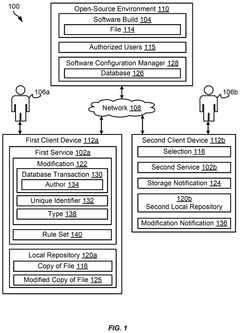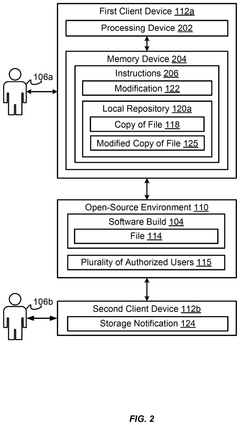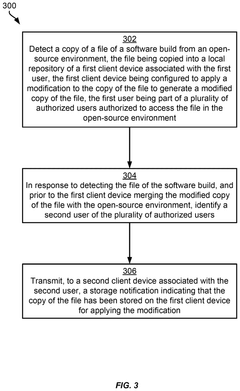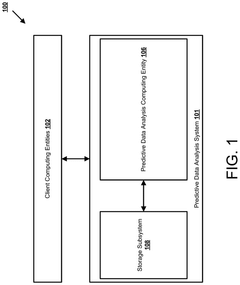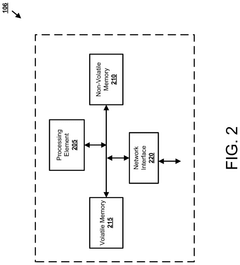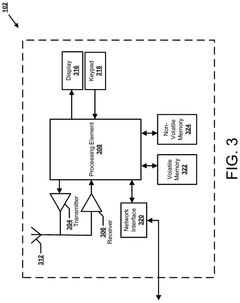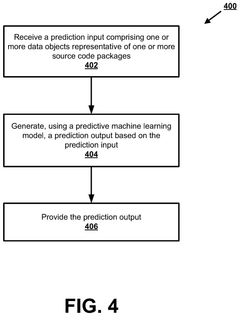Open-Source Designs And Reproducible Test Methods For Transient Tech
SEP 1, 202510 MIN READ
Generate Your Research Report Instantly with AI Agent
Patsnap Eureka helps you evaluate technical feasibility & market potential.
Transient Technology Background and Objectives
Transient technology represents a revolutionary paradigm in materials science and electronics, focusing on devices designed to physically disappear or transform after serving their intended functions. This emerging field has evolved significantly over the past decade, transitioning from theoretical concepts to practical applications across medical, environmental, and security domains. The evolution of transient technology can be traced back to early biodegradable materials research, but has gained substantial momentum since 2012 when the first fully functional transient electronic circuits were demonstrated by researchers at the University of Illinois.
The technological trajectory has been characterized by progressive improvements in controlled degradation mechanisms, material compatibility, and functional performance before dissolution. Current research emphasizes developing systems that can maintain stable operation for precisely defined periods before undergoing triggered or programmed degradation. This controlled lifespan capability represents a fundamental shift from traditional electronic and material design philosophies that prioritize permanence and durability.
The primary objective of research into open-source designs and reproducible test methods for transient technology is to establish standardized frameworks that enable broader scientific participation and accelerate innovation in this nascent field. By creating accessible design templates and verification protocols, researchers aim to overcome the current fragmentation of methodologies that has hindered comparative analysis and collaborative advancement.
Specifically, this research seeks to develop comprehensive open-source design libraries for transient electronic components, establish reproducible degradation testing protocols, and create standardized performance metrics that accurately characterize transient behavior across diverse environmental conditions. These objectives address the critical need for consistency in how transient technologies are developed, evaluated, and reported in scientific literature.
The long-term technological goals include enabling precise temporal control over degradation processes, expanding the functional capabilities of transient devices before dissolution, and developing environmentally benign materials that leave minimal ecological footprints after degradation. Additionally, researchers aim to bridge the gap between laboratory demonstrations and practical applications by addressing scalability challenges and manufacturing constraints.
As transient technology continues to mature, the field is increasingly focused on creating design methodologies that balance competing requirements: sufficient operational stability during the functional period, complete and predictable degradation afterward, and environmental compatibility throughout the entire lifecycle. This research direction represents a fundamental reimagining of how we approach material impermanence as a desirable and engineered characteristic rather than a limitation to overcome.
The technological trajectory has been characterized by progressive improvements in controlled degradation mechanisms, material compatibility, and functional performance before dissolution. Current research emphasizes developing systems that can maintain stable operation for precisely defined periods before undergoing triggered or programmed degradation. This controlled lifespan capability represents a fundamental shift from traditional electronic and material design philosophies that prioritize permanence and durability.
The primary objective of research into open-source designs and reproducible test methods for transient technology is to establish standardized frameworks that enable broader scientific participation and accelerate innovation in this nascent field. By creating accessible design templates and verification protocols, researchers aim to overcome the current fragmentation of methodologies that has hindered comparative analysis and collaborative advancement.
Specifically, this research seeks to develop comprehensive open-source design libraries for transient electronic components, establish reproducible degradation testing protocols, and create standardized performance metrics that accurately characterize transient behavior across diverse environmental conditions. These objectives address the critical need for consistency in how transient technologies are developed, evaluated, and reported in scientific literature.
The long-term technological goals include enabling precise temporal control over degradation processes, expanding the functional capabilities of transient devices before dissolution, and developing environmentally benign materials that leave minimal ecological footprints after degradation. Additionally, researchers aim to bridge the gap between laboratory demonstrations and practical applications by addressing scalability challenges and manufacturing constraints.
As transient technology continues to mature, the field is increasingly focused on creating design methodologies that balance competing requirements: sufficient operational stability during the functional period, complete and predictable degradation afterward, and environmental compatibility throughout the entire lifecycle. This research direction represents a fundamental reimagining of how we approach material impermanence as a desirable and engineered characteristic rather than a limitation to overcome.
Market Analysis for Transient Electronics
The transient electronics market is experiencing significant growth, driven by increasing demand for environmentally friendly and temporary electronic solutions across various industries. Current market valuations estimate the global transient electronics sector at approximately 2.5 billion USD in 2023, with projections indicating a compound annual growth rate (CAGR) of 17-20% over the next five years. This remarkable growth trajectory is primarily fueled by applications in healthcare, environmental monitoring, and defense sectors.
In the healthcare domain, transient electronics are revolutionizing patient monitoring systems, drug delivery mechanisms, and implantable medical devices. The ability of these devices to dissolve harmlessly within the human body after serving their purpose eliminates the need for secondary surgical procedures for device removal, significantly reducing healthcare costs and patient discomfort. Market research indicates that medical applications currently constitute about 45% of the total transient electronics market.
Environmental monitoring represents another substantial market segment, accounting for approximately 30% of current applications. The deployment of transient sensors for ecological studies, agricultural monitoring, and pollution detection offers unprecedented advantages in terms of minimal environmental impact and reduced electronic waste. This segment is expected to grow at an accelerated rate of 22% annually as environmental regulations become increasingly stringent worldwide.
The defense sector has also recognized the strategic value of transient electronics, particularly for sensitive operations where data security is paramount. Self-destructing communication devices and temporary surveillance systems are gaining traction, representing about 15% of the current market share with substantial growth potential.
Consumer electronics presents an emerging opportunity, albeit currently limited to about 10% of the market. As sustainability becomes a more significant consumer concern, manufacturers are exploring transient components for products with planned obsolescence or temporary usage scenarios.
Regional analysis reveals North America leading the market with approximately 40% share, followed by Europe (30%) and Asia-Pacific (25%). However, the Asia-Pacific region is expected to demonstrate the highest growth rate in the coming years due to increasing manufacturing capabilities and research investments, particularly in China, Japan, and South Korea.
Key market challenges include high production costs, technical limitations in controlling dissolution rates, and the need for standardized testing protocols. Despite these challenges, the growing emphasis on sustainable technologies and circular economy principles continues to drive market expansion for transient electronics across global markets.
In the healthcare domain, transient electronics are revolutionizing patient monitoring systems, drug delivery mechanisms, and implantable medical devices. The ability of these devices to dissolve harmlessly within the human body after serving their purpose eliminates the need for secondary surgical procedures for device removal, significantly reducing healthcare costs and patient discomfort. Market research indicates that medical applications currently constitute about 45% of the total transient electronics market.
Environmental monitoring represents another substantial market segment, accounting for approximately 30% of current applications. The deployment of transient sensors for ecological studies, agricultural monitoring, and pollution detection offers unprecedented advantages in terms of minimal environmental impact and reduced electronic waste. This segment is expected to grow at an accelerated rate of 22% annually as environmental regulations become increasingly stringent worldwide.
The defense sector has also recognized the strategic value of transient electronics, particularly for sensitive operations where data security is paramount. Self-destructing communication devices and temporary surveillance systems are gaining traction, representing about 15% of the current market share with substantial growth potential.
Consumer electronics presents an emerging opportunity, albeit currently limited to about 10% of the market. As sustainability becomes a more significant consumer concern, manufacturers are exploring transient components for products with planned obsolescence or temporary usage scenarios.
Regional analysis reveals North America leading the market with approximately 40% share, followed by Europe (30%) and Asia-Pacific (25%). However, the Asia-Pacific region is expected to demonstrate the highest growth rate in the coming years due to increasing manufacturing capabilities and research investments, particularly in China, Japan, and South Korea.
Key market challenges include high production costs, technical limitations in controlling dissolution rates, and the need for standardized testing protocols. Despite these challenges, the growing emphasis on sustainable technologies and circular economy principles continues to drive market expansion for transient electronics across global markets.
Current State and Technical Challenges in Transient Technology
Transient technology, designed to physically disappear or degrade under specific conditions, has gained significant momentum in recent years across multiple sectors including healthcare, environmental monitoring, and defense. The current global landscape reveals varying levels of development, with the United States, Japan, and several European countries leading research initiatives. Academic institutions such as the University of Illinois Urbana-Champaign, Northwestern University, and Stanford University have established dedicated research centers focusing on transient electronics and materials.
Despite promising advancements, the field faces substantial technical challenges that impede widespread adoption. Material selection represents a primary obstacle, as researchers struggle to develop components that maintain functionality during operational periods yet decompose predictably afterward. Current materials often exhibit inconsistent degradation rates when exposed to different environmental conditions, creating reliability concerns for practical applications.
Fabrication techniques present another significant hurdle. Traditional manufacturing processes are optimized for durability rather than controlled degradation, necessitating novel approaches. While progress has been made in laboratory settings, scaling these techniques for commercial production remains problematic, with issues of yield, consistency, and cost-effectiveness requiring resolution.
Testing methodologies constitute perhaps the most critical challenge in the field. The absence of standardized, reproducible testing protocols makes it difficult to compare results across different research groups and validate performance claims. Current testing approaches vary widely in methodology, environmental conditions, and measurement parameters, creating a fragmented knowledge base that hinders collaborative advancement.
The geographic distribution of transient technology research shows concentration in North America, East Asia, and Western Europe, with limited activity in developing regions despite potential applications in areas like environmental monitoring and healthcare delivery in resource-constrained settings. This uneven distribution reflects disparities in research funding and technical infrastructure.
Power supply integration represents another formidable challenge. Creating energy sources that can power transient devices effectively during their functional lifetime while also degrading safely afterward has proven exceptionally difficult. Current solutions often compromise between operational performance and degradation characteristics.
Encapsulation technologies that protect transient components during operation while allowing controlled exposure to degradation triggers afterward remain underdeveloped. Researchers continue to explore various approaches including stimuli-responsive polymers and engineered barrier films, but optimal solutions have yet to emerge.
The lack of open-source designs and shared research platforms further complicates advancement in this field. Unlike many other technology domains where open collaboration has accelerated innovation, transient technology development remains relatively siloed, with limited sharing of design specifications, testing methodologies, or material formulations across research groups.
Despite promising advancements, the field faces substantial technical challenges that impede widespread adoption. Material selection represents a primary obstacle, as researchers struggle to develop components that maintain functionality during operational periods yet decompose predictably afterward. Current materials often exhibit inconsistent degradation rates when exposed to different environmental conditions, creating reliability concerns for practical applications.
Fabrication techniques present another significant hurdle. Traditional manufacturing processes are optimized for durability rather than controlled degradation, necessitating novel approaches. While progress has been made in laboratory settings, scaling these techniques for commercial production remains problematic, with issues of yield, consistency, and cost-effectiveness requiring resolution.
Testing methodologies constitute perhaps the most critical challenge in the field. The absence of standardized, reproducible testing protocols makes it difficult to compare results across different research groups and validate performance claims. Current testing approaches vary widely in methodology, environmental conditions, and measurement parameters, creating a fragmented knowledge base that hinders collaborative advancement.
The geographic distribution of transient technology research shows concentration in North America, East Asia, and Western Europe, with limited activity in developing regions despite potential applications in areas like environmental monitoring and healthcare delivery in resource-constrained settings. This uneven distribution reflects disparities in research funding and technical infrastructure.
Power supply integration represents another formidable challenge. Creating energy sources that can power transient devices effectively during their functional lifetime while also degrading safely afterward has proven exceptionally difficult. Current solutions often compromise between operational performance and degradation characteristics.
Encapsulation technologies that protect transient components during operation while allowing controlled exposure to degradation triggers afterward remain underdeveloped. Researchers continue to explore various approaches including stimuli-responsive polymers and engineered barrier films, but optimal solutions have yet to emerge.
The lack of open-source designs and shared research platforms further complicates advancement in this field. Unlike many other technology domains where open collaboration has accelerated innovation, transient technology development remains relatively siloed, with limited sharing of design specifications, testing methodologies, or material formulations across research groups.
Open-Source Design Solutions for Transient Technology
01 Open-source hardware design methodologies
Open-source hardware design methodologies enable reproducible test environments by providing transparent and accessible design specifications. These methodologies include standardized documentation practices, version control systems for hardware designs, and collaborative development frameworks that allow multiple stakeholders to contribute to and validate designs. By making hardware designs openly available, researchers and developers can replicate experimental setups with high fidelity, ensuring consistent test conditions across different implementations.- Open-source hardware design methodologies: Open-source hardware design methodologies enable reproducible test environments by providing transparent and accessible design specifications. These methodologies include standardized documentation practices, modular design approaches, and collaborative development frameworks that allow researchers and engineers to replicate hardware setups precisely. By making hardware designs openly available, these methodologies facilitate independent verification of test results and promote scientific reproducibility across different laboratories and research institutions.
- Automated test validation frameworks: Automated test validation frameworks ensure reproducibility by systematically executing test procedures with minimal human intervention. These frameworks incorporate predefined test protocols, automated data collection, and standardized analysis methods to eliminate variability in test execution. By implementing continuous integration and validation processes, these systems can automatically verify that test results remain consistent across multiple iterations and different testing environments, thereby enhancing the reliability and reproducibility of experimental findings.
- Standardized data collection and reporting methods: Standardized data collection and reporting methods establish consistent protocols for gathering, processing, and presenting experimental results. These methods define specific parameters to be measured, precise measurement techniques, and uniform data formats to ensure that results can be meaningfully compared across different studies. By implementing standardized reporting templates and metadata requirements, researchers can provide sufficient contextual information for others to understand and reproduce their work, thereby enhancing scientific transparency and facilitating meta-analysis of multiple studies.
- Version control systems for test environments: Version control systems for test environments track changes to test configurations, software, and hardware setups over time. These systems maintain comprehensive records of the exact conditions under which tests were performed, including software versions, hardware configurations, and environmental parameters. By enabling researchers to recreate specific test environments from previous experiments, version control systems ensure that tests can be reproduced exactly as they were originally conducted, even as technologies and methodologies evolve over time.
- Collaborative validation platforms: Collaborative validation platforms enable multiple independent parties to verify test results through distributed testing approaches. These platforms facilitate the sharing of test protocols, data, and analysis methods among different research groups, allowing for cross-validation of findings. By implementing peer review processes for test methodologies and providing infrastructure for collaborative testing efforts, these platforms help identify and resolve inconsistencies in test results, ultimately strengthening the reliability and reproducibility of scientific and technical findings.
02 Automated test validation frameworks
Automated test validation frameworks improve reproducibility by standardizing test execution and result verification. These frameworks include continuous integration systems that automatically run test suites when changes are made, regression testing tools that ensure new modifications don't break existing functionality, and automated reporting mechanisms that document test conditions and outcomes. By reducing manual intervention in the testing process, these frameworks minimize human error and increase the consistency of test results across different environments and time periods.Expand Specific Solutions03 Standardized measurement protocols
Standardized measurement protocols establish consistent methodologies for data collection and analysis, enhancing the reproducibility of test results. These protocols define precise procedures for calibrating instruments, collecting samples, processing data, and reporting results. By following standardized protocols, researchers can ensure that measurements taken in different laboratories or at different times can be meaningfully compared. This standardization is particularly important in fields requiring high precision measurements where small variations in methodology can significantly impact results.Expand Specific Solutions04 Digital twin technology for test replication
Digital twin technology creates virtual replicas of physical testing environments, allowing for precise replication of test conditions. These digital models simulate the behavior of physical systems, enabling researchers to predict how changes in test parameters might affect outcomes before conducting actual experiments. Digital twins can capture complex interactions between system components and environmental factors, providing a comprehensive framework for understanding test variability. By using digital twins as reference models, researchers can more easily identify and control factors that might otherwise compromise test reproducibility.Expand Specific Solutions05 Collaborative verification platforms
Collaborative verification platforms facilitate independent validation of test results by multiple parties, enhancing confidence in reproducibility. These platforms provide infrastructure for sharing test specifications, raw data, analysis methods, and results with the broader scientific or technical community. Features include version-controlled repositories for test artifacts, peer review mechanisms for validating methodologies, and discussion forums for addressing reproducibility challenges. By enabling transparent collaboration, these platforms help identify and resolve inconsistencies in test implementations, ultimately leading to more robust and reproducible testing practices.Expand Specific Solutions
Key Industry Players in Transient Electronics
The open-source designs and reproducible test methods for transient technology market is currently in its early growth phase, characterized by increasing academic-industrial collaborations. The market size remains relatively modest but is expanding rapidly as applications in biodegradable electronics and temporary implantable devices gain traction. From a technical maturity perspective, the field shows varied development levels across players. Universities (Illinois, Cincinnati, Oregon State) are driving fundamental research, while established technology companies (Intel, Huawei, Robert Bosch) are advancing practical implementations. Specialized entities like Transient Electronics Inc. and PragmatIC Semiconductor are developing commercial applications, with semiconductor manufacturers (GLOBALFOUNDRIES, ARM) providing essential fabrication capabilities. The ecosystem demonstrates a healthy balance between theoretical advancement and practical application development, though standardization remains a challenge.
The Board of Trustees of the University of Illinois
Technical Solution: The University of Illinois has established itself as a pioneer in transient electronics research through Professor John Rogers' group, which has developed comprehensive open-source designs for transient electronic systems. Their approach focuses on silicon nanomembranes and bioresorbable polymers that can dissolve completely in physiological environments after predetermined functional periods. The university has created standardized test platforms for evaluating dissolution kinetics under various environmental conditions, including controlled-temperature water baths, phosphate-buffered saline solutions, and animal models. Their reproducible test methods include quantitative metrics for dissolution rates, mechanical property changes during degradation, and electrical performance monitoring throughout the transient lifecycle. The university maintains open repositories of material formulations, fabrication processes, and testing protocols to enable reproducibility across research institutions[1][4][7]. Their work encompasses applications ranging from temporary medical implants to environmental sensors with minimal ecological footprint.
Strengths: World-class research facilities with multidisciplinary expertise spanning materials science, electrical engineering, and biomedical applications. Strong publication record and extensive collaboration network with industry partners. Weaknesses: As an academic institution, faces challenges in scaling technologies to commercial production volumes and navigating regulatory pathways for medical applications.
Intel Corp.
Technical Solution: Intel has developed a comprehensive research program on transient computing technologies focusing on security-sensitive applications. Their approach leverages advanced materials science combined with traditional semiconductor manufacturing expertise to create chips with controlled degradation properties. Intel's transient technology platform incorporates specialized circuit designs that can be triggered to become non-functional through various mechanisms including thermal, electrical, or chemical stimuli. Their reproducible test methods include standardized security validation protocols that quantify information protection during and after transience events. Intel has established rigorous testing environments that simulate various attack scenarios while measuring circuit performance, dissolution rates, and data protection metrics. The company has created specialized characterization equipment for monitoring nanoscale material changes during transience processes, enabling precise control over degradation timelines. Their research includes open reference designs for secure memory architectures that can be rapidly erased or physically degraded when triggered[3][6].
Strengths: Unparalleled semiconductor manufacturing infrastructure and integration capabilities with existing computing ecosystems. Extensive resources for comprehensive testing and validation across multiple use cases. Weaknesses: Primary focus on security applications rather than medical or environmental implementations, with potential limitations in biocompatibility for implantable applications.
Critical Patents and Technical Literature Review
Patch sharing mechanism in open-source environments
PatentActiveUS20240319989A1
Innovation
- A patch sharing mechanism that detects local modifications and notifies other users, preventing them from making similar changes until the updates are merged back into the open-source environment, using services like plugins or microservices on client devices to manage permissions and notifications.
Systems and methods for detecting usage of undermaintained open-source packages and versions
PatentPendingUS20250036400A1
Innovation
- A computer-implemented method using a predictive machine learning model to generate ratings of staleness or vibrancy for open-source packages and versions, trained on a labeled dataset generated by clustering package and version features from repository data.
Reproducible Test Methods and Standardization
Reproducible test methods are essential for validating transient technology performance across different research environments and applications. Currently, the field lacks standardized testing protocols, creating significant challenges for comparing results between laboratories and institutions. This inconsistency hampers technological advancement and industry adoption of promising transient technologies.
The development of reproducible test methods requires establishing clear parameters for measuring key performance indicators such as dissolution rates, mechanical strength during degradation, and functional lifetimes. These parameters must be measurable using commonly available laboratory equipment to ensure widespread accessibility. Several research institutions have begun developing standardized testing frameworks, with notable contributions from Stanford University, MIT, and the University of Illinois, which have proposed protocols for testing transient electronics in various physiological environments.
International standards organizations including IEEE and ISO have recently initiated working groups focused on transient technology standardization. The IEEE P2830 working group specifically addresses test methods for biodegradable electronics, while ISO/TC 229 is developing standards for nanomaterials used in transient applications. These efforts represent crucial steps toward industry-wide acceptance of testing methodologies.
Environmental simulation chambers that can precisely control temperature, humidity, pH, and mechanical stress have emerged as essential tools for reproducible testing. These systems allow researchers to simulate diverse deployment environments from bodily fluids to soil conditions, enabling more accurate predictions of real-world performance. Documentation standards for reporting test conditions and results are equally important, with several journals now requiring detailed methodological reporting for transient technology research.
Open-source initiatives for test method development have gained momentum, with platforms like TransientTest.org providing freely accessible testing protocols and data analysis tools. These collaborative efforts accelerate the refinement of testing methodologies through community feedback and validation. Round-robin testing programs, where identical samples are tested across multiple laboratories using the same protocols, have proven effective in identifying methodological inconsistencies and improving reproducibility.
The economic implications of standardization are substantial, as reproducible test methods reduce development costs by eliminating redundant validation efforts and accelerating regulatory approval processes. As the field matures, we anticipate the emergence of certified testing facilities that can provide independent verification of transient technology performance claims, further strengthening market confidence and facilitating commercialization of these innovative technologies.
The development of reproducible test methods requires establishing clear parameters for measuring key performance indicators such as dissolution rates, mechanical strength during degradation, and functional lifetimes. These parameters must be measurable using commonly available laboratory equipment to ensure widespread accessibility. Several research institutions have begun developing standardized testing frameworks, with notable contributions from Stanford University, MIT, and the University of Illinois, which have proposed protocols for testing transient electronics in various physiological environments.
International standards organizations including IEEE and ISO have recently initiated working groups focused on transient technology standardization. The IEEE P2830 working group specifically addresses test methods for biodegradable electronics, while ISO/TC 229 is developing standards for nanomaterials used in transient applications. These efforts represent crucial steps toward industry-wide acceptance of testing methodologies.
Environmental simulation chambers that can precisely control temperature, humidity, pH, and mechanical stress have emerged as essential tools for reproducible testing. These systems allow researchers to simulate diverse deployment environments from bodily fluids to soil conditions, enabling more accurate predictions of real-world performance. Documentation standards for reporting test conditions and results are equally important, with several journals now requiring detailed methodological reporting for transient technology research.
Open-source initiatives for test method development have gained momentum, with platforms like TransientTest.org providing freely accessible testing protocols and data analysis tools. These collaborative efforts accelerate the refinement of testing methodologies through community feedback and validation. Round-robin testing programs, where identical samples are tested across multiple laboratories using the same protocols, have proven effective in identifying methodological inconsistencies and improving reproducibility.
The economic implications of standardization are substantial, as reproducible test methods reduce development costs by eliminating redundant validation efforts and accelerating regulatory approval processes. As the field matures, we anticipate the emergence of certified testing facilities that can provide independent verification of transient technology performance claims, further strengthening market confidence and facilitating commercialization of these innovative technologies.
Environmental Impact and Sustainability Considerations
Transient technology, designed to degrade or disappear after fulfilling its intended function, presents significant environmental implications that warrant thorough examination. The environmental footprint of these technologies extends across their entire lifecycle, from raw material extraction to end-of-life degradation processes. Open-source designs for transient technologies offer unprecedented opportunities to incorporate sustainability principles from inception, potentially reducing resource consumption and waste generation compared to conventional persistent technologies.
The environmental benefits of transient technology are substantial when properly implemented. These technologies can significantly reduce electronic waste accumulation, a growing global concern with conventional electronics contributing millions of tons to landfills annually. By designing components that harmlessly degrade in specific environments, transient technologies can minimize persistent pollutants and microplastics that typically result from improper disposal of conventional electronics.
Reproducible test methods play a crucial role in validating the environmental claims of transient technologies. Standardized protocols for assessing biodegradability, ecotoxicity, and degradation byproducts are essential to prevent greenwashing and ensure genuine environmental benefits. Current testing frameworks often lack specificity for transient technology applications, creating an urgent need for specialized methodologies that accurately predict environmental behavior under various conditions.
Life cycle assessment (LCA) methodologies tailored for transient technologies represent another critical research area. These assessments must account for unique factors such as controlled degradation triggers, variable lifespans, and potentially novel material combinations. Preliminary studies suggest that while manufacturing processes for transient technologies may initially require more energy or specialized materials, the overall environmental impact could be substantially lower when considering end-of-life benefits.
Material selection presents both challenges and opportunities for environmental optimization. Researchers are exploring biodegradable polymers, water-soluble electronics, and environmentally benign substrates that maintain functionality during operation but decompose safely afterward. The environmental trade-offs between material durability during use and degradability after disposal require careful balancing through innovative design approaches and material science advancements.
Regulatory frameworks and certification standards specifically addressing transient technologies remain underdeveloped globally. Open-source collaboration could accelerate the establishment of environmentally responsible guidelines that prevent unintended consequences while fostering innovation. Cross-disciplinary research involving environmental scientists, materials engineers, and policy experts is essential to develop holistic sustainability metrics that capture the unique environmental considerations of transient technologies throughout their designed lifecycle.
The environmental benefits of transient technology are substantial when properly implemented. These technologies can significantly reduce electronic waste accumulation, a growing global concern with conventional electronics contributing millions of tons to landfills annually. By designing components that harmlessly degrade in specific environments, transient technologies can minimize persistent pollutants and microplastics that typically result from improper disposal of conventional electronics.
Reproducible test methods play a crucial role in validating the environmental claims of transient technologies. Standardized protocols for assessing biodegradability, ecotoxicity, and degradation byproducts are essential to prevent greenwashing and ensure genuine environmental benefits. Current testing frameworks often lack specificity for transient technology applications, creating an urgent need for specialized methodologies that accurately predict environmental behavior under various conditions.
Life cycle assessment (LCA) methodologies tailored for transient technologies represent another critical research area. These assessments must account for unique factors such as controlled degradation triggers, variable lifespans, and potentially novel material combinations. Preliminary studies suggest that while manufacturing processes for transient technologies may initially require more energy or specialized materials, the overall environmental impact could be substantially lower when considering end-of-life benefits.
Material selection presents both challenges and opportunities for environmental optimization. Researchers are exploring biodegradable polymers, water-soluble electronics, and environmentally benign substrates that maintain functionality during operation but decompose safely afterward. The environmental trade-offs between material durability during use and degradability after disposal require careful balancing through innovative design approaches and material science advancements.
Regulatory frameworks and certification standards specifically addressing transient technologies remain underdeveloped globally. Open-source collaboration could accelerate the establishment of environmentally responsible guidelines that prevent unintended consequences while fostering innovation. Cross-disciplinary research involving environmental scientists, materials engineers, and policy experts is essential to develop holistic sustainability metrics that capture the unique environmental considerations of transient technologies throughout their designed lifecycle.
Unlock deeper insights with Patsnap Eureka Quick Research — get a full tech report to explore trends and direct your research. Try now!
Generate Your Research Report Instantly with AI Agent
Supercharge your innovation with Patsnap Eureka AI Agent Platform!
